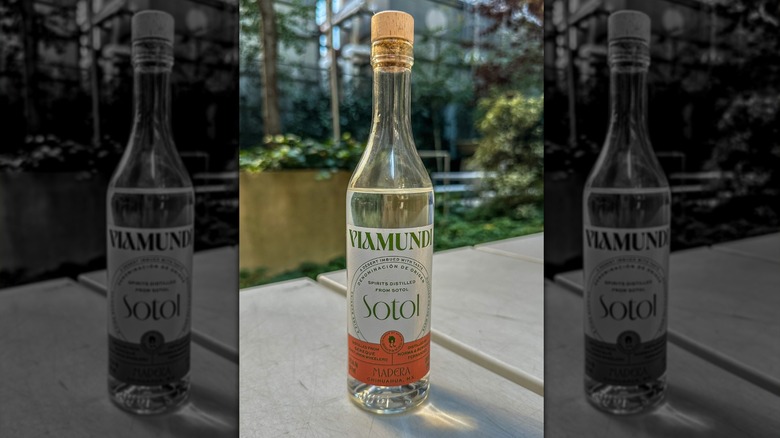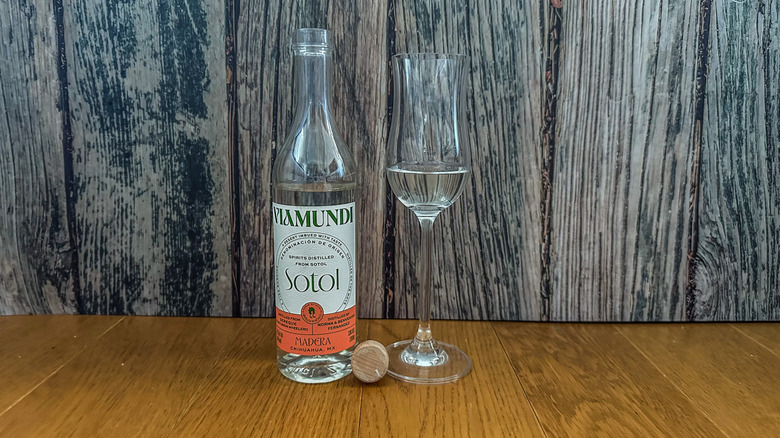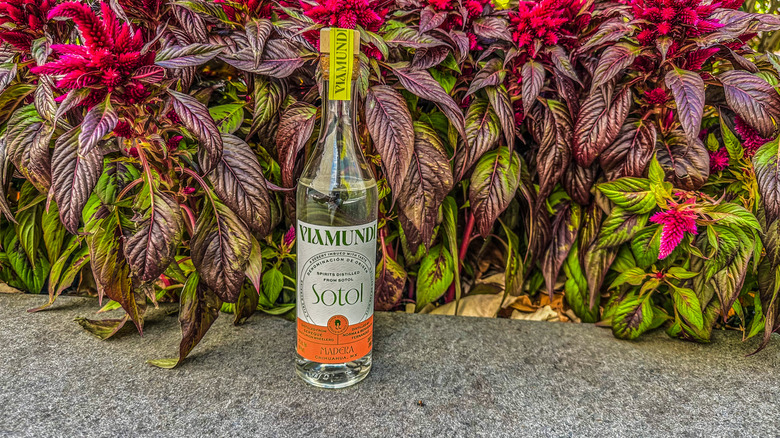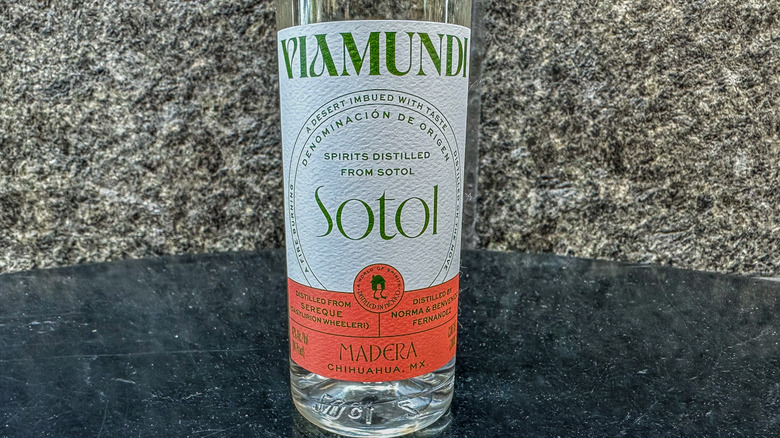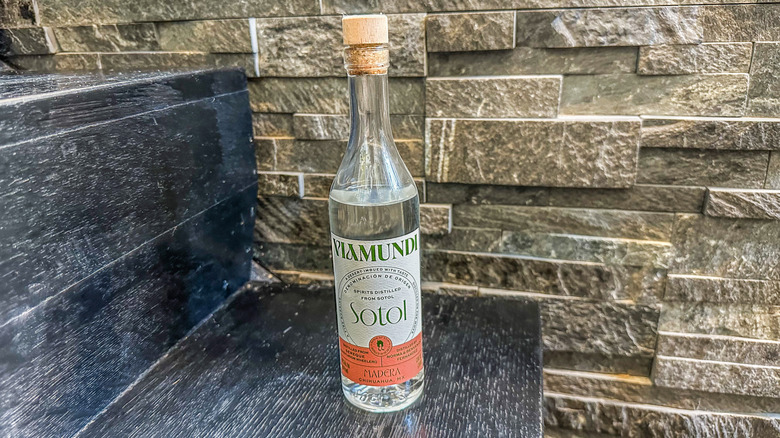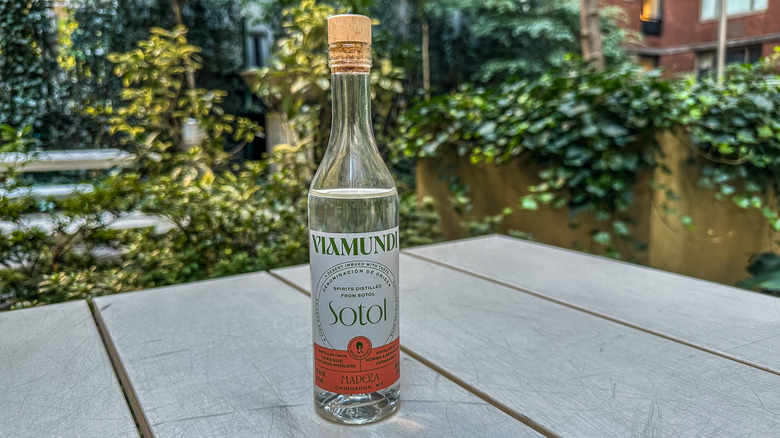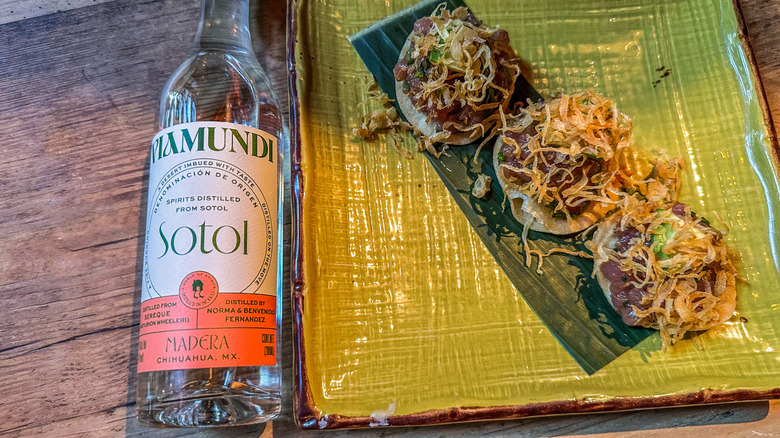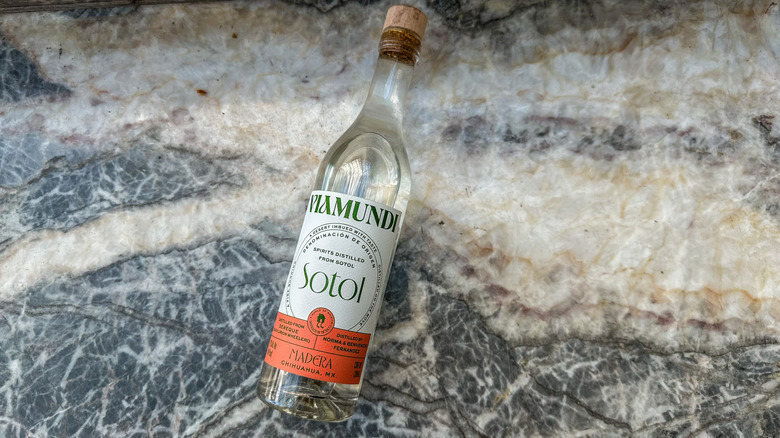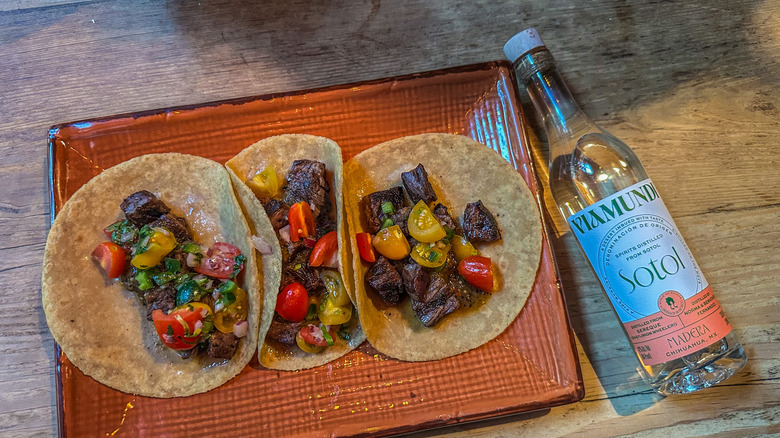Viamundi Sotol: The Ultimate Bottle Guide
The list of spirits made in Mexico is a fascinating one. For many, the assumption is that the portfolio starts with mezcal and ends with tequila. And while these two agave-based spirits are by far the most well-known to come from Mexico, the country can be extremely proud of producing several other distilled spirits. Sotol is a lesser-known liquor made from the Dasylirion plant, but don't be too surprised if you've never heard of it. Up until just a few years ago, sotol wasn't even legal to produce in Mexico, let alone distribute in the United States.
Viamundi Sotol is charging a path forward for the industry. For David Weissman and Adam Castelsky, co-founders of Viamundi Spirits, getting the word out about this spirit is one of their largest tasks. With so much history and cultural significance for this unique spirit to hang its proverbial hat on, there are many good reasons to get fully educated on it.
Consider this ultimate bottle guide your resource for a well-rounded education on this fascinating spirit, from its riveting history dating back to the early 1900s, to how you can best enjoy it in your next cocktail.
Recommendations are based on firsthand impressions of promotional materials and products provided by the manufacturer.
What is Viamundi Sotol?
Sotol is made in the town of Madera in the state of Chihuahua. Unsurprisingly, it tends to get lost in the larger agave-based spirits market. After all, the flowering plant that sotol is made from — Dasylirion wheeleri — is part of the same family as agave. While sotol has always been different from other Mexican spirits, at one time in history it was actually considered to be mezcal. According to Adam Castelsky and David Weissman, when the Spanish conquered Mexico, they put trade policies in place that promoted Spanish-made goods, and since there was no distinction amongst the different agave spirits, they were all given a name to act as a blanket term and cover their bases.
Despite this early categorization, sotol has charted its own course as a distilled spirit, and it actually differs from its agave-based counterparts more than you might think. To start, according to Castelsky and Weissman, sotol can be made from one of seven varieties of the Dasylirion plant, as opposed to just one type of agave like tequila. The Dasylirion plant is also far more sustainable than agave, as it flowers every few years and can be harvested many times in its 100-year lifespan, whereas agave only flowers once in its lifetime and as such, can only be harvested once.
What does Viamundi Sotol taste like?
To get the most well-rounded understanding of Viamundi Sotol, it's best to try it neat in a glass, with nothing else. Pour it and walk away. Take a lap around your house. Let it sit in the glass and breathe a bit, kind of like a fine wine. First, give it a few swirls and then a good nose. A deep inhale with your mouth slightly open will introduce you to the delicate smoky notes and underlying sweetness in the sotol. A few more swirls will open it further, revealing some rounder notes of honey, lemon peel, and plums. In this way, Viamundi sotol isn't all that different from a quality mezcal.
On the palate, everything changes. The smoke is still present, but it takes a back seat to a tasting note that can only be described as equally funky and fresh. There's stone fruit, a little bit of fennel seed, and a layer of sweet basil. There's definitely some heat and spice that blooms and expands as you swallow, but the finish is clean and smooth. While there are many benefits to including Viamundi sotol in your next margarita, there's no reason not to enjoy it all on its own.
How is Viamundi Sotol made?
The production process for sotol, just like tequila and mezcal, starts with a plant, specifically Dasylirion grown in the state of Chihuahua and harvested in the wild. It's here, at 6,500 feet above sea level in the Sierra Madre Occidental mountains, that the Dasylirion wheeleri plant can really thrive. After the harvesting process, distillers dig a pit to roast the plant, before grinding it into a pulp and pressing it to extract the sugar. From there, the liquid is fermented in wooden vats and distilled in copper stills.
Adam Castelsky and David Weissman have been working with 4th generation distiller Bienvenido Fernandez and his grandson Giovani to produce their sotol. Fernandez's grandfather made sotol during the height of prohibition, and was accustomed to regular raids by the Mexican authorities. As a result, he decided to create a mobile distillery, bringing the finished sotol to his community for everyone to take part in and enjoy. Despite a rocky history with regard to legalization of the product itself, the Fernandez men managed to bring the product to market and share it with the masses, representing generations of cultural tradition. Without the ingenuity of the Fernandez family, the entire category may not even exist today.
How to best enjoy Viamundi Sotol
Like any distilled spirit, there are multiple schools of thought on how to drink Viamundi Sotol. David Weissman and Adam Castelsky note that it is traditionally consumed neat, but that doesn't mean it can't make for an incredible addition to a mixed cocktail. As always, when building a cocktail from scratch, it's best to look at the tasting notes in the base spirit and work outward from there.
The herbaceous, fresh flavor of Viamundi Sotol lends itself nicely to something equally light and herb-forward. Weissman recommends the Garden Party, a cocktail made with Sotol, orange Curaçao, basil syrup, fresh lime juice, and absinthe. It's served on the rocks and garnished with a basil leaf — a beautiful representation of the earthy, fruity flavors going on in the sotol itself.
For those who prefer to go with tradition and enjoy Viamundi Sotol neat, we recommend chilling the bottle before serving and sipping it as is — no need for an ice cube or even a splash of water. On its own, Viamundi Sotol is delicate and smooth, without needing much, or really any, doctoring in the glass.
Is Viamundi Sotol expensive?
Cost is rather subjective, and alcohol pricing is entirely based on the type of spirit, age statement, rarity, and so on. However, there are some standard generalities we can use to determine if the price is equal to the product on the shelf. In other words, does the price match the value? Is the juice worth the squeeze?
If it's $20 or below, it's safe to say it's reasonable. In the $25 to $50 range? Now we're a little fancier. In the $50 to $75 range, things are about to get pretty darn special. And if you're eyeing a bottle that costs over $75 or higher than $100, now we're talking investment alcohol. That said, a 750-milliliter bottle of Viamundi Sotol is priced at $57 as of October 2024, which falls pretty squarely in the middle in the sotol category.
A search through the sotol catalog on Total Wine & More shows a bottle of Doble Filo Sotol at $44.99, Sotol Coyote Durango Blanco at $53.99, and Cardenxe Sotol de Desierto at $70.99. There are far more expensive bottles of Sotol once you look at aged ones, but even in the blanco category, Viamundi Sotol is still mid-range. While spending nearly $60 on a bottle of booze is nothing to scoff at, based on other brands in the category, Viamundi Sotol is reasonably priced.
Viamundi Sotol vs Hacienda de Chihuahua Sotol
The Sotol category is increasingly growing outside of Mexico and into the U.S., but on the grand stage, it still has a ways to go. There are, however, quite a few brands available for purchase in the U.S., so to best paint a picture of how Viamundi Sotol stands up in the market, we chose to compare it side by side with another growing brand: Hacienda de Chihuahua.
Both brands source their Sotol from the north of Mexico in Chihuahua, using the Dasylirion wheeleri plant to make their spirit. They both use similar production methods, including copper stills for distillation. As a result, there are similarities regarding flavor; they both boast a fresh, delicate sweetness with plenty of complexity, making them more than worthwhile for sipping or perhaps mixing in a cocktail. The first noticeable difference is in the proof — Hacienda de Chihuahua's Sotol is bottled at 38% ABV, while Viamundi Sotol is slightly higher at 43% ABV. Additionally, there's a notable price difference. While Hacienda de Chihuahua is priced at around $31, Viamundi Sotol costs $57, which is a massive jump.
For a first time Sotol consumer, this price difference can easily be a deciding factor as to which brand to invest in. But going purely based on flavor and quality of the product, Viamundi Sotol is in good company with Hacienda de Chihuahua Sotol.
Sotol is made from a plant in the same family as agave
Unlike many Mexican spirits that are agave-based, sotol is not made from the agave plant but it does share some lineage. "Dasylirion and agave are both part of the Asparagacea plant family and until 2009, scientists considered them close enough to be related to each other, so the distinction ended there," explained David Weissman. However, as science changed and evolved with the times, so did the differentiation between these two seemingly closely-related plants. In 2009, according to Weissman, scientists found that these two plants needed to be further divided into subfamilies. Agave was designated part of the Agavoideae subfamily, and Dasylirion into the Nolinoideae subfamily.
"It's fascinating to us that scientists can continue to learn more about plants that have been studied for centuries, if not longer, to the point of reclassifying them," noted Weissman. The use of Dasylirion as opposed to agave in sotol is really what sets it apart in the distilled spirits industry. There are 23 accepted species of Dasylirion, all of which are native to either Mexico, Texas, or Arizona. Options abound, but Viamundi Sotol just uses Dasylirion wheeleri.
Sotol wasn't legalized until 1994
Despite continuing to gain traction and attention in the larger spirits market, sotol hasn't always had such a bright and shiny reputation. According to Adam Castelsky and David Weissman, its history goes back to the 1920s, when the U.S. declared prohibition. In an attempt to be "good neighbors," the Mexican government made sotol production illegal, believing it was being smuggled over the border. However, sotol wasn't being made on a large scale — it was primarily produced for small communities in Chihuahua. Still, the authorities considered it a criminal enterprise nonetheless, and sotol distilleries were regularly raided by the Mexican authorities, making production and distribution difficult for many years.
Sotol producers continued to make this product over the next several decades, never once deterring from their cultural traditions despite the spirit's legal status in Mexico. After all that hard work and dedication to the craft, sotol was finally declared legal in 1994 and given its denomination of origin in 2002. As a result, sotol producers now have the opportunity to bring this spirit beyond its local popularity in Chihuahua and to the larger market, introducing it to the rest of the world.
Sotol's versatile flavor profile works wonders in sauces and seafood marinades
Sotol can have a wide range of flavors depending on where it's produced and what species of Dasylirion is used to make it. Tasting notes can range from bright and grassy with hints of pine, to more mineral or even tobacco-like, leathery flavors. Viamundi Sotol has light herbaceous notes with some noticeable smokiness to it as well, making it a fairly versatile spirit when it comes to working it into everyday recipes. Primarily, the flavor profile lends itself beautifully to marinades.
Using alcohol in a meat or seafood marinade isn't uncommon — vodka tenderizes meat well, whereas bourbon adds sweet notes, depth of flavor, and a nice char on the outside from the sugars. Viamundi Sotol works in a similar way, adding rich flavor and brightness without overpowering. For example, sotol infuses bright, herbal notes to a sweet and spicy shrimp marinade (don't leave the shrimp in the marinade longer than 30 minutes though), or it can replace vodka in a hearty tomato sauce for a flavorful twist on penne a la vodka.

